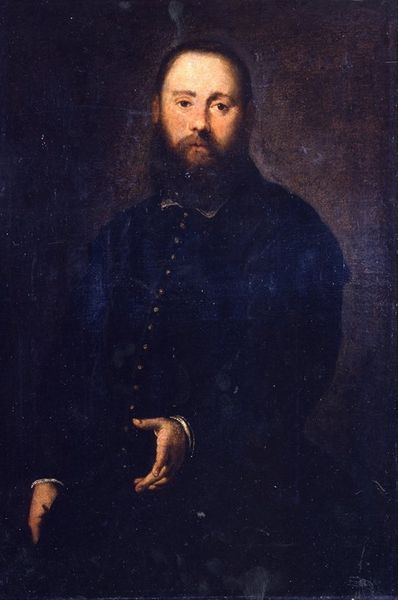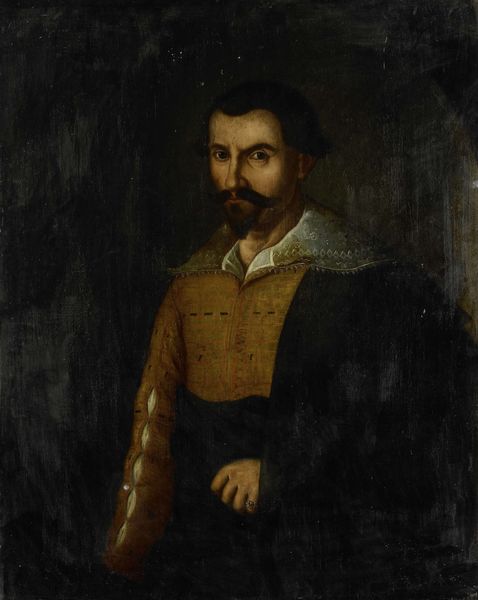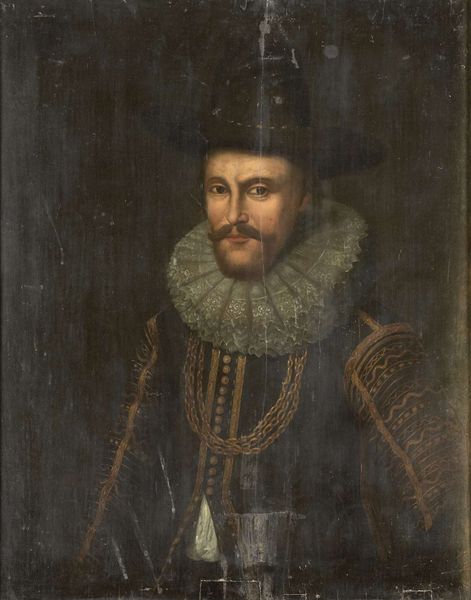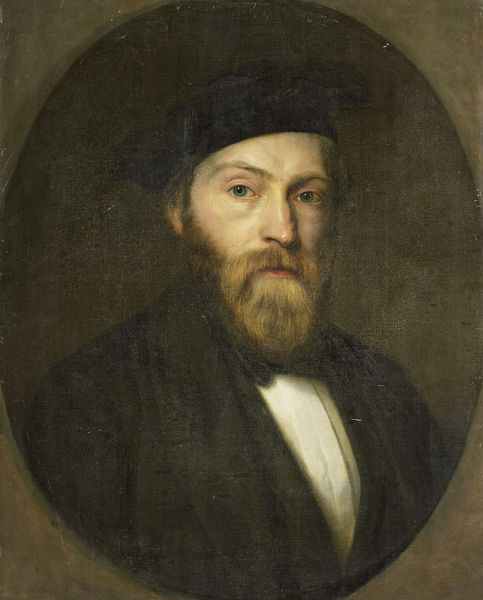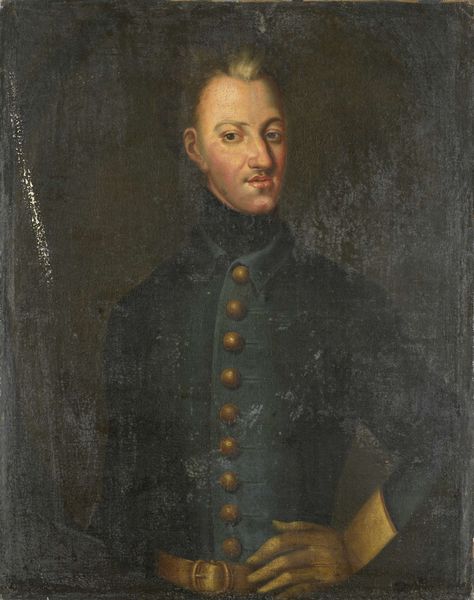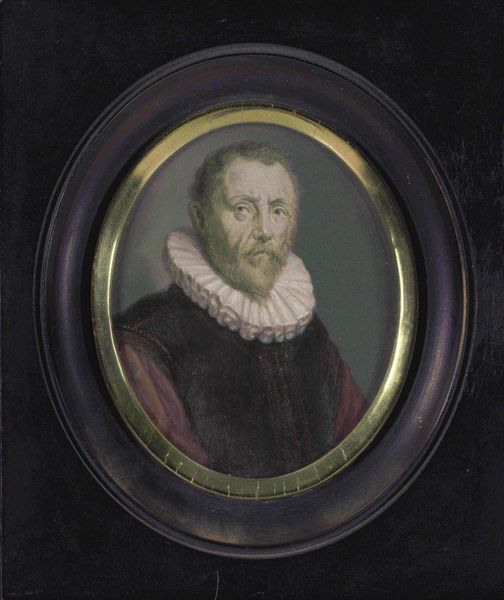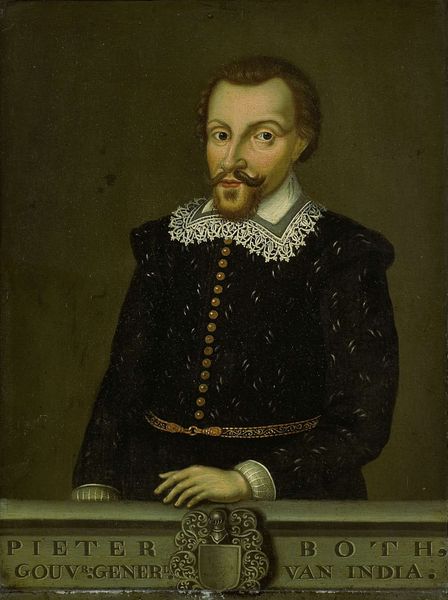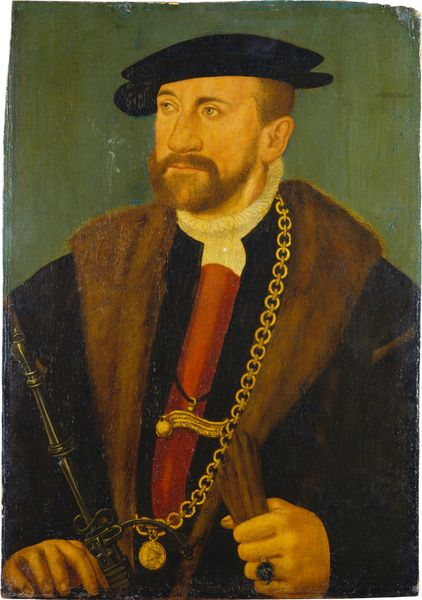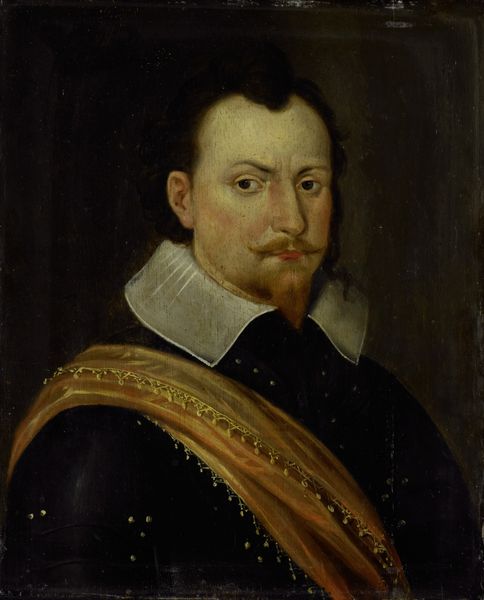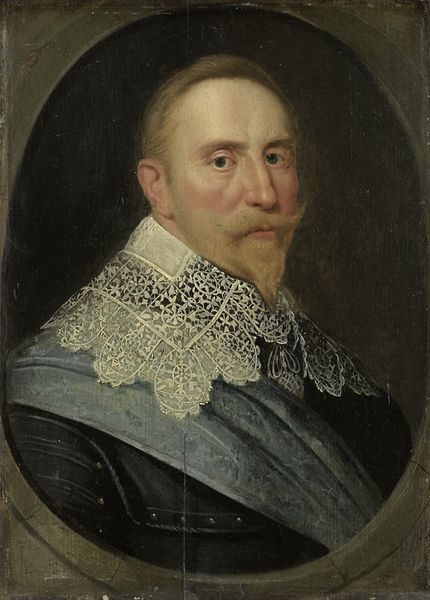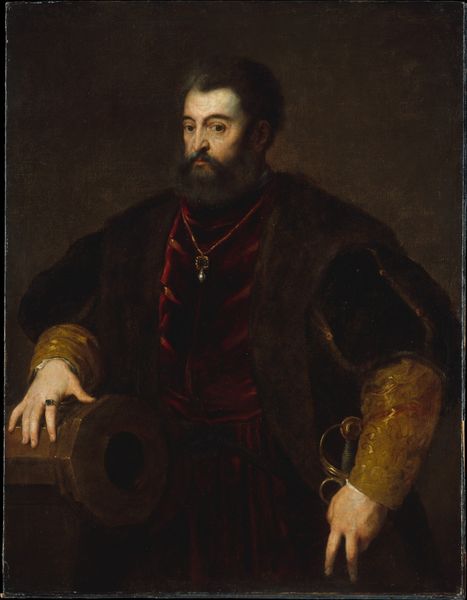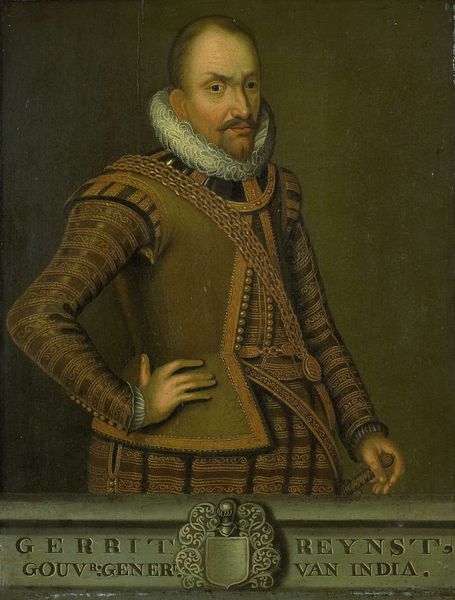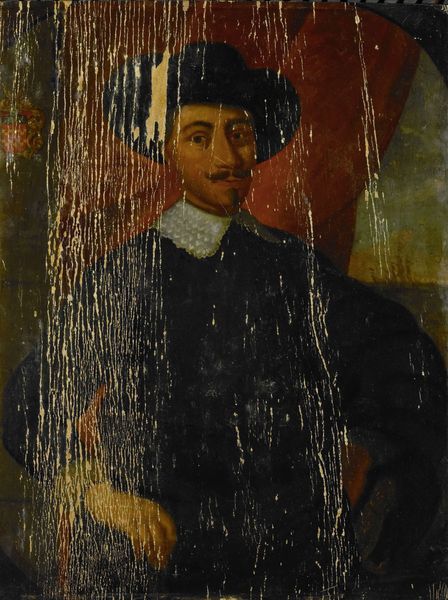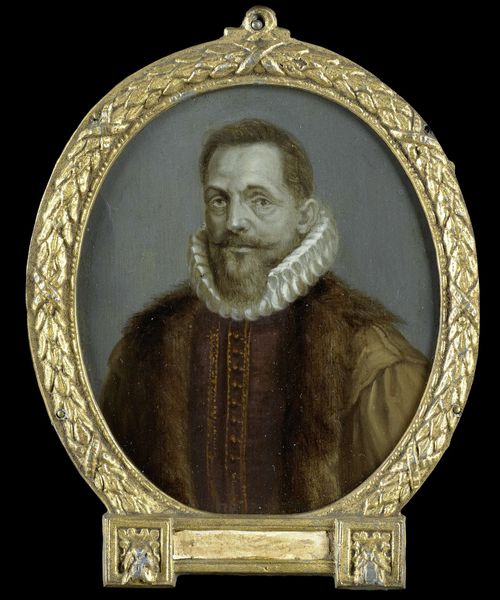
oil-paint
#
portrait
#
baroque
#
oil-paint
#
oil painting
#
portrait reference
#
history-painting
#
portrait art
#
realism
Dimensions: height 98 cm, width 77.5 cm, depth 8.5 cm
Copyright: Rijks Museum: Open Domain
Editor: Here we have an oil painting referred to as "Portrait of Pieter Both, Governor-General of the Dutch East Indies," dating roughly between 1625 and 1675, by an anonymous artist. I'm struck by the stark contrast between the dark background and the elaborate lace collar. What catches your eye? Curator: My interest is piqued by the materiality of the portrait. The layers of oil paint, built up over time by an anonymous painter, speaks to the workshop practices and perhaps even the economic realities of portrait production during that era. The sitter’s social status dictated a demand which the artist had to satisfy with the resources available to them at the time. Look closely at the detail of the collar. Editor: You're right, the collar does stand out. Was lace-making a significant industry at the time? Could the portrayal of such fine lace indicate the governor's wealth derived directly from trade and exploited labour? Curator: Precisely! Lace production, and the trade of such materials in general, represents a global network of extraction, labour and consumption. The material prosperity represented by Both’s portrait cannot be disentangled from this history. Do you think this artwork would've carried a different meaning for those creating such commodities versus those commissioning and consuming them? Editor: Definitely. The very act of commemorating someone like Both normalizes a system of labour that should be questioned. Curator: The making and distribution of goods, like fine art and clothing depicted within it, reinforces particular power dynamics. Thinking through materiality really opens that up. Editor: I hadn’t thought about portraiture this way. Examining it through this perspective gives me new tools to investigate the ethics embedded within even the simplest artistic choices.
Comments
No comments
Be the first to comment and join the conversation on the ultimate creative platform.
